List of African-American astronauts
African-American astronauts are Americans of African descent who have either traveled into space or been part of an astronaut program.
.jpg)
The first three African Americans to travel into space – Ronald McNair, Guion Bluford and Fred Gregory
African-American astronauts
Traveled into space
| # | Image | Name Birth date |
Note | Missions (launch date) | Sources |
|---|---|---|---|---|---|
| 1 |  |
Guion Bluford November 22, 1942 |
First African-American astronaut in space | [1] | |
| 2 | 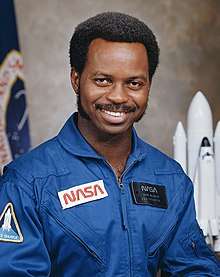 |
Ronald McNair October 21, 1950 †January 28, 1986 |
Died in the Space Shuttle Challenger disaster | [1] | |
| 3 |  |
Frederick D. Gregory January 7, 1941 |
First African American to pilot and command a Space Shuttle mission; acting Administrator of NASA, 2005 | [1] | |
| 4 | 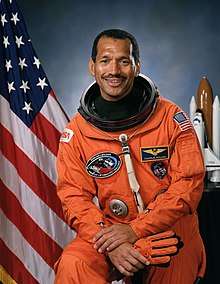 |
Charles Bolden August 19, 1946 |
Administrator of NASA, July 17, 2009 – January 20, 2017 | [1] | |
| 5 |  |
Mae Jemison October 17, 1956 |
First African-American woman in space |
|
[1] |
| 6 | 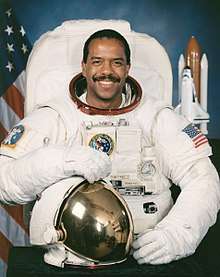 |
Bernard A. Harris Jr. June 26, 1956 |
First African American to walk in space | [1] | |
| 7 | 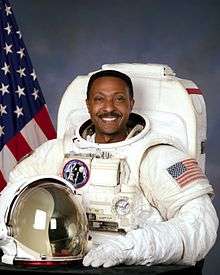 |
Winston E. Scott August 6, 1950 |
Veteran of three spacewalks | [1] | |
| 8 |  |
Robert Curbeam March 5, 1962 |
Veteran of seven spacewalks | [1] | |
| 9 | 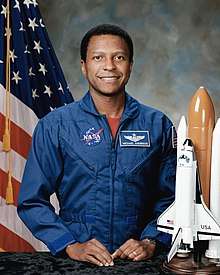 |
Michael P. Anderson December 25, 1959 †February 1, 2003 |
Died in the Space Shuttle Columbia disaster | [1] | |
| 10 |  |
Stephanie Wilson September 27, 1966 |
[1] | ||
| 11 | 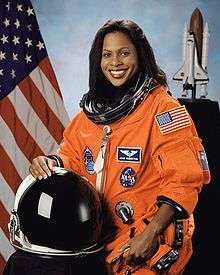 |
Joan Higginbotham August 3, 1964 |
|
[1] | |
| 12 | 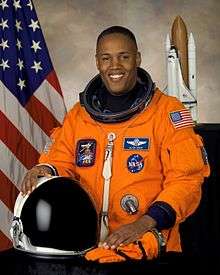 |
Alvin Drew November 5, 1962 |
Veteran of two spacewalks, February 28 and March 2, 2011 | [1] | |
| 13 | .jpg) |
Leland D. Melvin February 15, 1964 |
Associate Administrator for Education at NASA | [1] | |
| 14 | 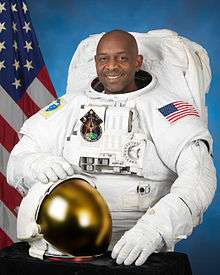 |
Robert Satcher September 22, 1965 |
EVA November 19 and November 23, 2009 |
|
[1] |
Never traveled into space
| Image | Name Birth date |
Note | Sources |
|---|---|---|---|
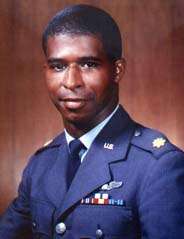 |
Robert Henry Lawrence Jr. October 2, 1935 †December 8, 1967 |
First African-American astronaut; selected for astronaut training in 1967 for the MOL program; died in an aircraft accident | [2] |
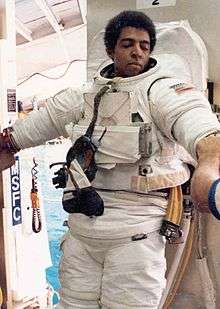 |
Livingston L. Holder, Jr. September 29, 1956 |
USAF astronaut in the Manned Spaceflight Engineer Program | [3] |
 |
Michael E. Belt September 9, 1957 |
Astronaut, payload specialist from TERRA SCOUT – US Army Project; retired January 12, 1991. Although he did not fly any shuttle missions during his time as an astronaut, he was the back-up payload specialist to Thomas J. Hennen for the STS-44 mission which deployed a military satellite, undergoing 9 months of astronaut training for the role[4] He was selected as an astronaut through the US Army's Terra Scout program which was created specifically to support STS-44.[5] | [6] |
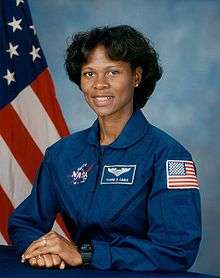 |
Yvonne Cagle April 24, 1959 |
Astronaut | [6] |
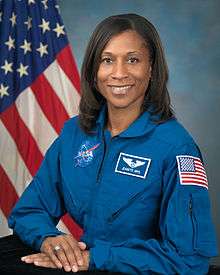 |
Jeanette J. Epps November 2, 1970 |
Astronaut, on January 5, 2016 NASA announced that Epps would become the first African-American space station crew member when she launched on her would-be first spaceflight in May 2018, as a flight engineer on Expedition 56, remaining on board for Expedition 57. On January 16, 2018, NASA announced that Epps had been replaced by her backup Serena M. Auñón-Chancellor, due to unknown reasons, and has sparked various media attention. | [6] |
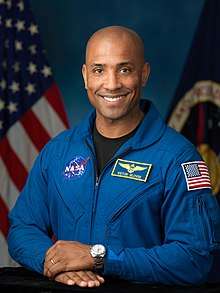 |
Victor J. Glover April 30, 1976 |
Scheduled to fly on Expedition 64 on USCV-1 also known as Crew-1. | [7] |
 |
Jessica Watkins May 14, 1988 |
Astronaut, NASA Astronaut Group 22 | [8] |
Often cited as the first African-American astronaut candidate
| Image | Name Birth date |
Note | Sources |
|---|---|---|---|
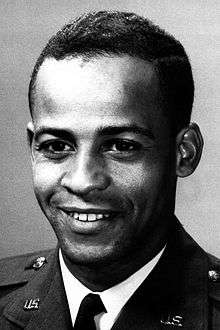 |
Ed Dwight September 9, 1933 |
Ed Dwight made it to the second round of an Air Force program from which NASA selected astronauts, but was not selected by NASA to be an astronaut. Resigned from the Air Force in 1966 due to racial politics. In July, 1961, Frederick Dutton, special assistant to the president, wrote to Adam Yarmolinsky, special assistant to the secretary of defense to say that it was important "that for symbolic purposes in crossing the frontiers of space, this country would have qualified members from minority backgrounds." Shortly after, General Curtis LeMay, chief of the air force told Chuck Yeager, who was running Aerospace Research Pilot School (ARPS) at Edwards Air Force Base that, "[Attorney General] Bobby Kennedy wants a colored in space. Get one into your course." This communication placed Ed Dwight on a career track that could have sent him into outer space. Dwight proceeded to Phase II of ARPS, but was not selected by NASA to be an astronaut. | [9] |
See also
- Arnaldo Tamayo Méndez, first person of African descent and first Afro-Latino to fly in space
References
- "NASA's African-American Astronauts Fact Sheet" (PDF). National Aeronautics and Space Administration. 2018. Retrieved February 22, 2019.
- Oberg, James H. (2005-02-23). "The Unsung Astronaut". MSNBC. Archived from the original on 2014-11-11. Retrieved 2011-01-27.
- Hoffman, Sarah (March 7, 2019). "A Space Pioneer Charts A Course For Future Astronauts". KCTS9. Retrieved March 11, 2019.
He became a satellite countdown controller, worked on classified missions and earned a position with the competitive Manned Spaceflight Engineer program. While training as an astronaut, he witnessed the faces of NASA’s space shuttle program shift to include women and minorities, along with the white men who first inspired him.
- Soldiers - Volume 47 - Page 20. Department of the Army. 1992.
- "EXPERIMENT REPORT, UNITED STATES ARMY SPACE EXPERIMENT 601, Terra Scout" (PDF). Defense Technical Information Center. 1992-07-29. Retrieved 2020-06-10.
- Phillips, Kerri (February 8, 2012). "Celebrating Black History Month: NASA's African-American Astronauts". AmericaSpace. Archived from the original on October 13, 2019. Retrieved March 11, 2019.
Four other African-Americans were selected by NASA as astronauts that did not have the opportunity to fly in space: Livingston Holder, Michael E. Belt, Yvonne Cagle, and Jeanette J. Epps. Each of these dedicated people believed in the advancement of human knowledge and space exploration, and some made the ultimate sacrifice doing what they felt was worth the risk for this endeavor.
- "Victor J. Glover, Jr. (Commander, U.S. Navy) NASA Astronaut". NASA. August 13, 2018. Archived from the original on August 8, 2018. Retrieved March 11, 2019.
- Garcia, Mark (2017-06-06). "Astronaut Candidate Jessica Watkins". NASA. Archived from the original on 2017-06-25. Retrieved 2017-06-07.
- We Could Not Fail: The First African Americans in the Space Program, Chapter 5, University of Texas Press, Austin, TX, 2015, pp. 86-104
This article is issued from Wikipedia. The text is licensed under Creative Commons - Attribution - Sharealike. Additional terms may apply for the media files.
.jpg)